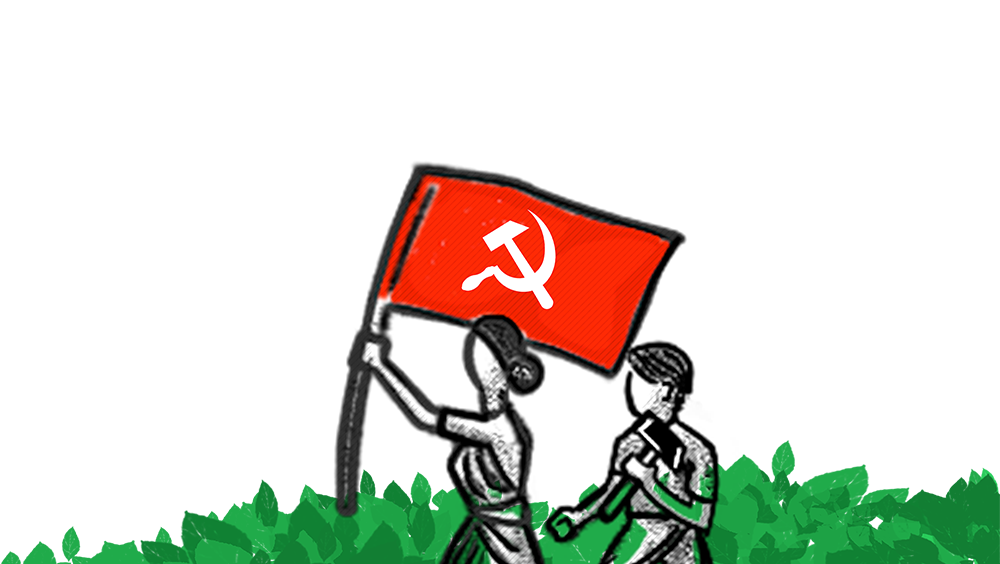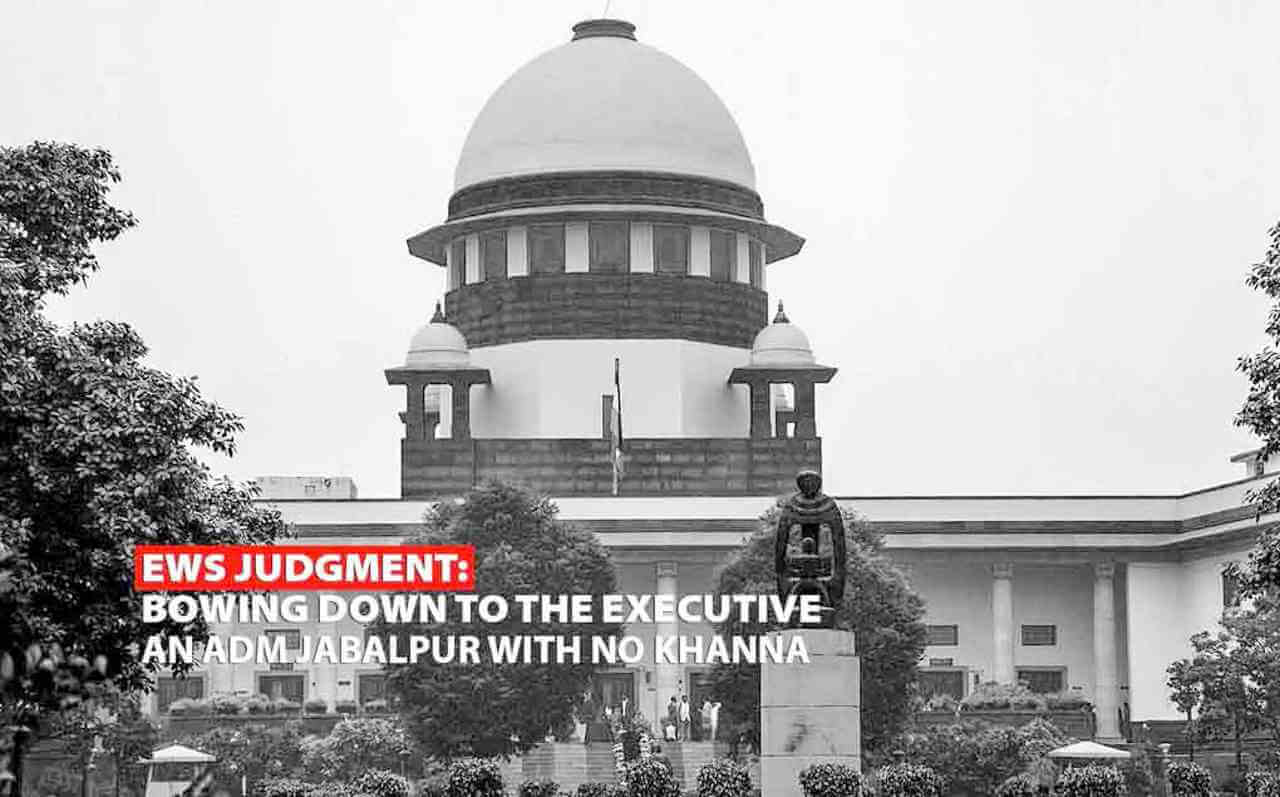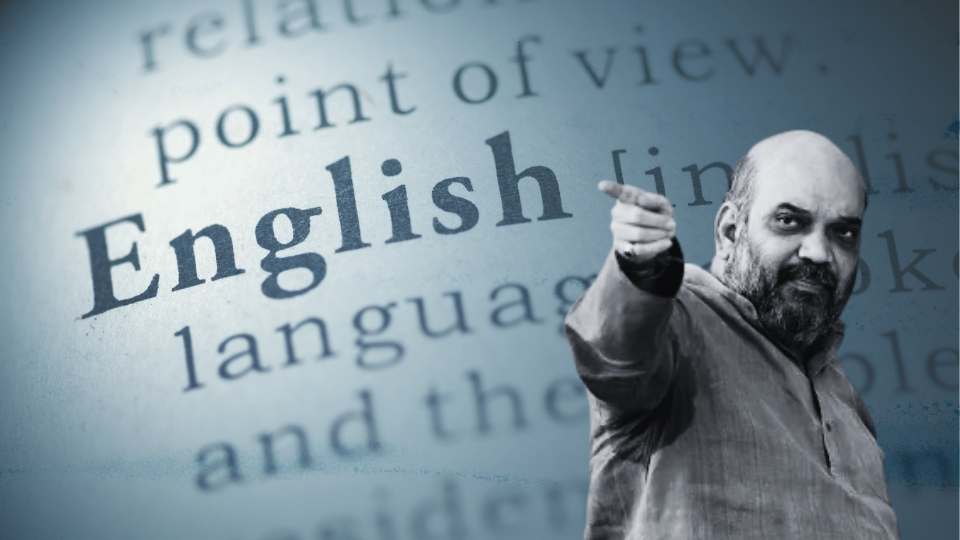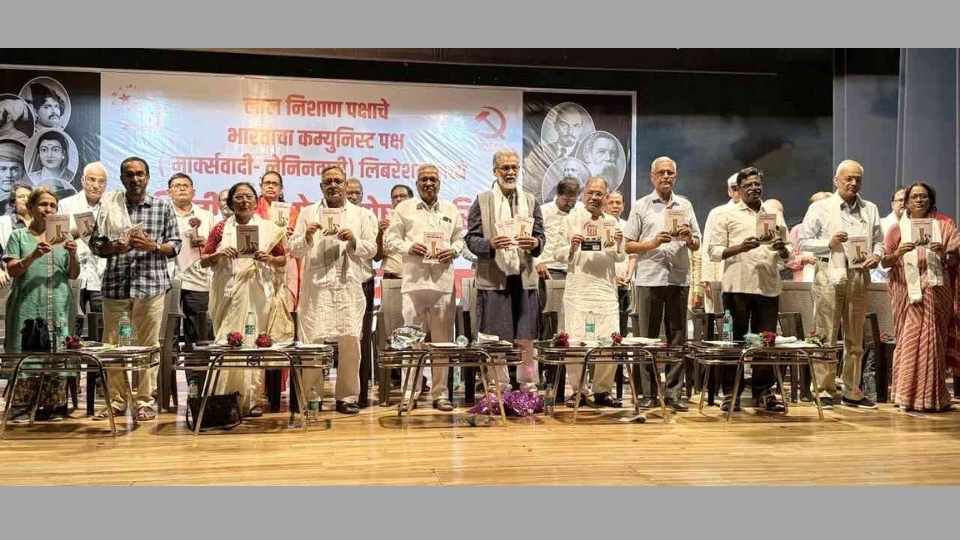The EWS judgment where a Constitution Bench of the Supreme Court upheld the 103rd amendment[1] to the Constitution, by a 3:2 majority[2], enabling the State to provide for a maximum of 10% reservation for “the economically weaker sections” of citizens other than Scheduled Castes, Scheduled Tribes and the Other Backward Classes, is nothing short of a travesty of justice. The Court rejected the arguments that reservation in education and employment on the basis of economic criteria is impermissible and offends the basic structure of the Constitution; that the exclusion of socially and educationally backward classes i.e. Dalits, Adivasis and OBCs is discriminatory; that providing for 10% additional reservation breaches the 50% ceiling of reservations already settled by the decisions of the Supreme Court; and that the amendment amounts to an abrogation of the Equality Code.
Recall that the 103rd amendment was brought in just few months before the 2019 parliamentary elections as the Modi government desperately sought to deflect from its abysmal failure to deliver on promises of “development” and “employment”. The amendment nullifies the very idea of reservations, which are constitutionally mandated on the basis of social and educational backwardness to historically oppressed communities. The Modi Government’s move was a fundamentally dishonest one with the underlying purpose of dismantling of the caste-based reservations mandated by the Constitution. By upholding the amendment, the Supreme Court has given its seal of approval on the blatant fraud played on the Constitution.
Undermining the fundamental rationale for reservations as the first step towards dismantling caste-based reservations:
Perhaps one of the biggest disservice that the Supreme Court has done in upholding EWS reservations is to undermine the fundamental rationale underlying reservations i.e. ensuring the representation of historically oppressed and marginalised communities in public life, be it educational institutions or government jobs.
The jurisprudence around reservations evolved over the past decades confirms it to be a policy of affirmative action aimed at ending the monopoly of dominant communities and ensuring equality of opportunity to the marginalised sections. Reservations were not contemplated to be a programme for poverty alleviation or even annihilation of caste, but as constitutionally mandating the right of representation in public life. It is for this purpose that social and educational backwardness and inadequacy in representation have been held to be the bedrock for grant of reservations.
In the EWS judgment, the majority opinion has held[3] that reservation cannot be regarded as an essential feature of the Constitution that cannot be modulated. It further held[4] that it is an instrument not only for inclusion of socially and educationally backward classes in the mainstream of society but, also for inclusion of any class or section so disadvantaged as to be answering the description of a weaker section. The dissenting opinion, while accepting that insertion of the ‘economic criteria’ for affirmative action per se is not unconstitutional, held the amendment to be unconstitutional since it excluded Dalits, Adivasis and OBCs.
Thus, both the majority and minority judgments, have diluted the constitutional mandate of reservations being a reparative policy for historically oppressed communities. The Supreme Court has given its imprimatur to EWS reservations which puts on equal footing the historically oppressed communities with the very communities responsible for their discrimination and persecution. This is the fraud played on the Constitution.
This has to be seen in conjunction with the observations in the concurring judgments of two judges who form part of the majority. Justice Bela M. Trivedi and Justice J.B. Pardiwala, while upholding economic status-based reservations have thought it fit to comment on caste-based reservations. Justice Bela M. Trivedi states that[5]: “… It cannot be gainsaid that the age-old caste system in India was responsible for the origination of the reservation system in the country. It was introduced to correct the historical injustice faced by the persons belonging to the scheduled castes and scheduled tribes and other backward classes, and to provide them a level playing field to compete with the persons belonging to the forward classes. However, at the end of seventy-five years of our independence, we need to revisit the system of reservation in the larger interest of the society as a whole, as a step forward towards transformative constitutionalism.” Justice J.B. Pardiwala states that[6]: “The new concept of economic criteria introduced by the impugned amendment for affirmative action may go a long way in eradicating caste-based reservation. It may be perceived as a first step in the process of doing away with caste-based reservation…” and he goes on to add that[7] “…Reservation should not continue for an indefinite period of time so as to become a vested interest.”
Justice J B Pardiwala has erroneously claimed that Dr. B. R. Ambedkar wanted caste-based reservations to continue only for 10 years, [8]: “…The idea of Baba Saheb Ambedkar was to bring social harmony by introducing reservation for only 10 years. However, it has continued for the past 7 decades…” In reality, the ten-year period for caste-based reservations was a compromise arrived at in the Constituent Assembly, with which Dr. B.R. Ambedkar was dissatisfied and suggested making use of constitutional amendments to keep extending these provisions.[9] Moreover, this time-limit to caste-based reservations is only in relation to political caste-based reservations and not to education and jobs.
These observations are divorced from reality. Despite decades of reservations, a look at existing data on representation of various social categories paints a dismal picture, reinforcing the need for continued reservations for SCs/STs/OBCs. Jitendra Singh, Minister of State for Personnel, Public Grievances and Pensions, informed Parliament in March this year that in 43 departments and government offices including Cabinet Secretariat, UPSC and Election Commission (but excluding the largest central government employers such as Railways and Department of Posts), the total number of Group A to Group C employees (including safaikarmacharis) works out to 5.12 lakh. Of these, 17.70% are SC, 6.72% ST and 20.26% OBC. In Group-A, the highest tier among these, the representation of SCs is just 12.86%, of STs 5.64% and of OBCs 16.88%.[10] This is not the case only with government jobs. A 2015 article examines the social composition i.e. share of different castes and communities, in positions of power and influence of public institutions in Allahabad namely the Press Club, University faculty, Bar Association, police, and commanding positions in trade unions, NGOs, media houses, and has found that these are heavily dominated by upper castes in general, and Brahmins and Kayasthas in particular, while disadvantaged castes, for their part, are largely relegated to subordinate or menial positions.[11] With the shift in the centre of gravity of job market towards private sector and IT sector in particular, upper caste students occupy dominant position in such a job market with their historical advantage of education, capital and caste networks. In sectors where there is no reservation including the judiciary, one sees domination of forward castes.
The observations on caste-based reservations offer a window of opportunity to the present regime to initiate the process of altogether doing away with caste-based reservations. This would be in line with the consistent efforts of the RSS to delegitimise caste-based reservations. Speaking at the Jaipur Literature Festival in January 2017, RSS ideologue Manmohan Vaidya said reservation is not required in India as it promotes separatism and friction in society.[12] In contrast, more recently, RSS joint general secretary, Dattatreya Hosabale said that reservations are required because there is a social and economic disparity in society.[13] Then again, a month prior to Dattatreya Hasabale’s statement, in August 2021, RSS sarsanghchalak, Mohan Bhagwat called for a “harmonious conversation” between those in favour of reservations and those against it.[14] These contradictory positions are part of RSS’s deliberate effort to popularise an alternate discourse on reservations, intended to abolish caste-based reservations.
Economic criteria – unconstitutional and oblivious of reality
All 5 judges of this Constitution Bench have unanimously held that economic-based reservations are legal and valid. The point of disagreement was on the question of exclusion of Dalits, Adivasis and OBCs from EWS reservations, which the majority opinion upheld.
The Court also brushed aside the law laid down by the 9-Judge bench in Indra Sawhney, and several other judgments, that economic criteria cannot be the sole basis to grant reservation, by holding that to avail the benefit of caste-based reservations, the class concerned ought to be carrying some other disadvantage too and not the economic disadvantage alone. To reiterate, reservation is for participation and representation and not a poverty alleviation programme. Economic upliftment and elimination of poverty is a goal for the State to strive for as per Directive Principles of State Policy but, reservation is not a way to alleviate poverty. If that were the case, decades of reservation ought to have lifted its beneficiaries, particularly Dalits and Adivasis and OBCs, from poverty. As pointed above, despite the decades of reservations, the conditions of these oppressed communities continue to be dismal.
Moreover, within the Constitutional frame, nothing stops the State from directing its policy towards ensuring that there is no concentration of wealth (Article 39(c)), from enacting a law providing the right to work (Article 41) or pass an enactment mandating living wages for workers (Article 43) and securing their participation in the managements of industries (Article 43-A).
The Supreme Court failed to consider these aspects as also the fact that economic status is transient in nature, unlike social backwardness, which is historical, resulting from caste practices and oppressions.
By upholding the amendment, the Supreme Court also joined in the mockery made of the immense poverty of oppressed communities caused by the historical injustice of caste. Judicial notice was taken of Office Memorandum F. No. 20013/01/2018-BC-II dated January 17, 2019, issued by the Ministry of Social Justice and Empowerment, Government of India which stipulated that only persons whose families have a gross annual income less than Rs. 8 lakhs, or agricultural land less than 5 acres, or residential flat less than 1,000 sq. ft., or residential plot less than 100 sq. yards in the notified Municipalities, or residential plot less than 200 sq. yards in the areas other than the notified Municipalities, are to be identified as EWS for the benefit of reservation.[15]
To put this in perspective, one can look at poverty lines fixed for access to basic rights, such as access to food through ration cards, access to medical services through government hospitals, where the recent rural and urban all-India poverty lines are Rs. 972/- and Rs. 1407/- respectively. Further the Report[16] of the Expert Committee on Determining the Methodology for Fixing the National Minimum Wage, Ministry of Labour and Employment, Government of India dated January 2019 has recommended that the national minimum wage ought to be Rs. 375 (at July 2018 prices). This works out to Rs. 9,750 per month for all wage workers, irrespective of sectors, skills, occupations and the rural-urban location. Incidentally the recent report “The State of Inequality in India” by the Institute for Competitiveness, brought out in response to the request of the Economic Advisory Council to the Prime Minister (EAC-PM) has found that an Indian earning a monthly wage of Rs 25,000/- is among the top 10 per cent of earners in the country.[17] In this scenario fixing an eligibility limit of Rs. 8 lakhs i.e. Rs. 67,000/- monthly income, for EWS makes a mockery of the reality of poverty in the country.
Unconstitutional and unconscionable exclusion of SCs, STs and OBCs
The majority judgment has brushed aside the explicit exclusion of Dalits, Adivasis and OBCs from EWS reservations on the ground that they are already enjoying the benefit of affirmative action in their favour by way of reservations in educational institutions and public employment, seats in Legislature, etc. This is despite the fact that they are also economically backward in addition to being socially and educationally backward. Indeed, the inclusion of forward class and exclusion of disadvantaged class from the protection and benefit of reservation violate the basic structure of the Constitution. The majority judgment has held as follows[18]: “… Suffice it to observe that the amendment in question is essentially related to the requirements of those economically weaker sections who have hitherto not been given the benefit of such an affirmative action (particularly of reservation), which was accorded to the other class/classes of citizens namely, the SEBCs/OBCs/SCs/STs. Viewing this affirmative action of EWS reservation from the standpoint of backward class versus forward class is not in accord with the very permissibility of compensatory discrimination towards the goal of real and substantive justice for all.” In fact the majority judgment has held that[19] “… this exclusion is inevitable for the true operation and effect of the scheme of EWS reservation…”
This the minority judgment has disagreed with in strong words holding that[20]: “…this court has for the first time, in the seven decades of the republic, sanctioned an avowedly exclusionary and discriminatory principle. Our Constitution does not speak the language of exclusion. In my considered opinion, the amendment, by the language of exclusion, undermines the fabric of social justice, and thereby, the basic structure.”
The majority judgment upheld EWS reservation to the exclusion of SCs/STs/OBCs without a basic understanding of who the poor in this country are, and ignoring the fact that social backwardness was a “cause” of economic backwardness and not its “consequence”. Income and wealth distribution, mirrors caste hierarchy. The poor are predominantly from the SC/ST/OBC communities, while dominant castes are the majority in higher social classes.
Caste and class, according to Babasaheb Ambedkar, are next door neighbours, and it is only a span that separates the two. He concluded that a caste is an enclosed class.[21] He also stated that[22]: “One striking feature of the caste system is that the different castes do not stand as a horizontal series all on the same plane. It is a system in which the different castes are placed in a vertical series one above the other” i.e. “the principle of gradation and rank”, which regulates inter-generational entitlements to basic social and economic rights. Thus, economic status largely follows caste hierarchy.
A study[23] on income and wealth disparity in India is revealing in this regard:
The population share of SCs/STs/OBCs in the top decile of wealth and consumption is lower than their overall population share.
- Average annual household income in India was Rs 1,13,222/-. Among dominant caste groups, Brahmins earned 48% above the national average while non-Brahmin dominant caste earned 45%. On the other hand, STs and SCs earned 34% and 21% less than the national average respectively. OBC groups earned 8% less than the national average.
- In matters of wealth ownership: 50% of the Brahmin, 31% of Rajputs, 44% of Bania and 57% of Kayasth fall in richest category. For other caste groups, only 5% ST, 10% SC and 16% OBC fall in richest category.
- Another study[24] concluded that of the total national assets, 41% is owned by upper caste Hindus, 31% by OBCs, 7.6% by SCs and 3.7% by STs.
The abovementioned study[25] finds that the population share of SCs/STs/OBCs in the top decile of wealth and consumption has deteriorated over the last 40 years. Upward class mobility is also a factor of caste. This is the Indian form of inequality, originating in the social structure of caste and exacerbated by neoliberal economic policies. As Anand Teltumbde[26] puts it, “Neoliberalism ostensibly came in the form of an economic theory that upheld a free market paradigm, but in reality it was an ideology akin to Spencer’s Social Darwinism”. That is to say, caste – rooted in hierarchy, notions of purity and supremacy – finds a willing partner in neoliberal policies, which itself is rooted in the notion of “survival of the fittest”.
Indeed, the Court, in its majority judgement, has ignored the glaring statistics brought to its attention. Relying on official reports, it was argued[27] that the EWS population among forward castes would be around 5%, and providing 10% of reservation for such a small population is manifestly arbitrary and fraud on the Constitution. For instance in Karnataka[28], only five communities — Brahmin, Jain, Aryavaishya, Nagarthas and Modaliars — that make up an estimated 4% of the State’s population, are outside the existing reservation matrix, and those who meet the criteria for EWS amongst them, which will be a miniscule percentage will now enjoy 10% reservation!
Conclusion
The Supreme Court role upholding in EWS reservations has to be seen in the broader context of the judiciary shielding the executive, and rarely interfering with the ruling regime’s policies. In the Modi era, there is the executive’s open interference in the appointment of judges, accompanied by the Court’s failure to perform its constitutional role as a check on governmental excesses. The court has been reluctant to counter the political interests of the ruling party evident from the verdicts in politically charged cases including Sahara-Birla, Loya, Bhima-Koregaon, Rafale, Aadhaar, Kashmir Habeas Corpus matters, Ayodhya, Sai Baba etc. and the deliberate delay in taking up so-called contentious cases challenging their political agenda including CAA, abrogation of Article 370, demonetisation, electoral bonds, etc. It is apparent that constituents of the judiciary have a political consensus with the ruling regime, also perhaps in deference to the overwhelming electoral mandate the present regime enjoys. Yet, as a legal scholar puts it: “…it has acted as a cheerleader for the Modi government’s agenda. Not only has it abdicated its supposed counter-democratic function as a shield for citizens against state lawlessness, but it has also actually acted as a powerful sword that can be wielded at the behest of the executive.” [29].
About four decades ago, a judge of the Gujarat High Court, Justice A.P. Ravani, while dealing with a challenge[30] to a trial court order directing eviction of certain hutments, made an interesting observation that the authorities and judges psychologically “represent only the class interest to which they belonged”. Unfortunately the EWS judgment confirms the trend of the judiciary betraying their own social prejudices and political beliefs.
Notes:
[1]. Vide the amendment clause (6) and Explanation was added to Article 15 and clause (6) was added to Article 16. The amendment came into effect on 14.01.2019.
[2]. Jst, Dinesh Maheshwari, Jst. Bela Trivedi and Jst. Pardiwala upheld the amendment, while Jst. Ravindra Bhat and Chief Justice UU Lalit dissented.
[3]. para 56 of majority judgement by Jst. Dinesh Maheshwari
[4]. Id at para 102(a)
[5]. para 28 of concurring judgment by Jst. Bela Trivedi
[6]. para 187 of concurring judgment by Jst Pardiwala
[7]. Id at para 190
[8]. Supra note 6 at para 191
[9]. https://theswaddle.com/ambedkar-didnt-endorse-a-time-limit-for-caste-based-why-did-a-supreme-court-judge-claim-he-did/
[10]. https://indianexpress.com/article/explained/scs-sts-obcs-in-central-govt-what-data-on-posts-and-vacancies-show-7881047/
[11]. “Caste and the Power Elite in Allahabad”, https://www.epw.in/journal/2015/6/special-articles/caste-and-power-elite-allahabad.html
[12]. https://www.india.com/news/india/rss-against-reservation-says-it-promotes-separatism-in-india-1772113/
[13]. https://timesofindia.indiatimes.com/india/reservations-should-continue-as-long-as-inequality-exists-in-society-rss-general-secretary-dattatreya-hosabale/articleshow/85210591.cms
[14]. https://www.outlookindia.com/website/story/india-news-rss-chief-mohan-bhagwat-pitches-for-harmonious-conversation-on-reservation/336597
[15]. Supra note 6 at para 74
[16]. https://labour.gov.in/sites/default/files/Commitee_on_Determination_of_Methodology.pdf
[17]. https://pib.gov.in/PressReleasePage.aspx?PRID=1826325
[18]. Supra note 3 at para 75
[19]. Supra note 3 at para 77.2
[20]. ara 1 of minority judgment by Jst. Ravindra Bhat
[21]. “Castes in India”, at pg 15, https://www.mea.gov.in/Images/attach/amb/Volume_01.pdf
[22]. “Philosophy of Hinduism” at page 47, http://www.mea.gov.in/Images/attach/amb/Volume_03.pdf
[23]. “Wealth Inequality, Class and Caste in India, 1961 – 2021”, https://wid.world/document/n-k-bharti-wealth-inequality-class-and-caste-in-india-1961-2012/
[24]. ‘Wealth Ownership and Inequality in India: A Socio-religious Analysis’, published in 2018, https://journals.sagepub.com/doi/abs/10.1177/2394481118808107?journalCode=sisa
[25]. “Wealth Inequality, Class and Caste in India, 1961 – 2021”, published in 2018, https://wid.world/document/n-k-bharti-wealth-inequality-class-and-caste-in-india-1961-2012/
[26]. “Victimhood of Dalits”, https://www.india-seminar.com/2020/727/727_anand_teltumbde.htm
[27]. Arguments noted at paras 10.2 and 16.2 of the majority judgment by Jst. Dinesh Maheshwari
[28]. https://www.thehindu.com/news/national/karnataka/in-karnataka-five-communities-with-4-population-will-fall-under-ews-quota/article66111568.ece
[29]. https://scroll.in/article/979818/the-crisis-of-legitimacy-plaguing-the-supreme-court-in-modi-era-is-now-hidden-in-plain-sight
[30]. Surat Municipal Corporation v. Rameshchandra [AIR 1986 Guj 50]





